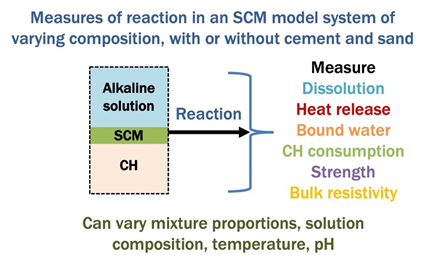Recent developments in reactivity testing of supplementary cementitious materials
DOI:
https://doi.org/10.21809/rilemtechlett.2021.150Keywords:
Reactivity, Supplementary cementitious materials, Durability, Calcium hydroxide, Heat release, Bulk resistivityAbstract
Identification and rapid characterization of novel supplementary cementitious materials (SCMs) is a critical need, driven by shortfalls in conventional SCMs. In this study, we present a discussion of recently developed reactivity tests – the R3 test, the modified R3 test, the lime strength test, and the bulk resistivity index test. These tests measure reactivity parameters such as heat release, bound water, calcium hydroxide consumption, strength, and bulk resistivity. All tests can screen inert from reactive materials. To additionally differentiate pozzolanic and latent hydraulic materials, two parameters, for example, calcium hydroxide consumption and heat release, are needed. The influences of SCM bulk chemistry, amorphous content, and fineness on measured reactivity are outlined. Reactivity test outputs can predict strength and durability of cement paste/mortar/concrete; however, caution must be exercised as these properties are influenced by a variety of other factors independent of reactivity. Thoughts are provided on using reactivity tests to screen materials for concrete durability.

Downloads
Published
How to Cite
Issue
Section
License
Copyright (c) 2021 Prannoy Suraneni

This work is licensed under a Creative Commons Attribution 4.0 International License.
Authors retain copyright of the articles published in RILEM Technical Letters and grant the journal the right of first publication with open access. The work is simultaneously licensed under Creative Commons Attribution 4.0 International License (CC BY 4.0) that allows others to share and adapt the work under the following terms: 1) a proper attribution is given in a form of bibliographic record with the DOI link directing to RILEM Technical Letters; 2) a link to the license is provided; 3) the changes (if any) are indicated.









